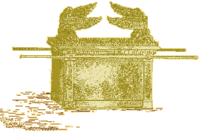Christian Art and Graven Images
Q. I am an artist (oils on canvas). I am very hesitant about painting Christian accounts from the Bible which would include angels, etc. If I did, would I be breaking the commandment regarding making graven images? As a human, I can rationalize that: a) God gave me this gift; b) illiterate people in the dark ages learned bible accounts via paintings and sculpture; c) illiterate people in the present day can learn Bible accounts via paintings; and d) paintings inspire me, therefore they can inspire others; and on and on. What do you think?
A: The command from God regarding graven images is very specific. It was also specifically given to Israel. With most Lutheran theologians (and many other Bible scholars), I also happen to believe that the prohibition on images is a “sub-point” of the Lord’s central command, “You shall have no other gods before me. (Exodus 20:3)” The thrust of the command argues against idolatry than more than against craftsmanship.
Throughout the history of Christianity, the case of Christian art has been debated. In general, the majority of the western Church has agreed that the command does not apply now that the true Image of God, Jesus Christ, has taken a concrete, human form.
In the Eastern Church, statuary was often forbidden, but icons, paintings, mosaics, and the like were usually allowed. The dispute boiled over in the Iconoclastic (icon-destroying) Controversy. To this day, two-dimensional representations are the norm.
 Even during the Old Testament period, certain images were part of Israel’s worship life, such as the cherubim on the Ark of the Covenant (Exodus 25:10-22), the oxen supporting the temple’s bronze basin (1 Kings 7:23-26), and the tabernacle curtains (Exodus 26:1).
Even during the Old Testament period, certain images were part of Israel’s worship life, such as the cherubim on the Ark of the Covenant (Exodus 25:10-22), the oxen supporting the temple’s bronze basin (1 Kings 7:23-26), and the tabernacle curtains (Exodus 26:1).Under the freedom of the Gospel, the question becomes not so much, “Is it allowed?” but more, “Is it the best thing to do?”
If you produce good art that makes people more aware of God in his holiness, perfection, and splendor, showing also his love for fallen man in the person of Jesus Christ, I think that you are doing a good thing. If you are making a mockery of Scripture, deriding Christ or destroying the historical record of the Bible, then it would not be good.
As a sort of personal (but still Biblical) aside, what sort of angels would you paint? With apologies to Christian author C. S. Lewis, would they look like beings who would frighten and awe me to the core of my being? Would they need to tell me, “Stop being afraid!”? Or would they be like so many illustrations from religious art, effeminate or even feminine creatures who couldn’t frighten and who could barely startle someone — beings more likely to say, “There, there, it’s okay”?
Scripture quoted from The Holy Bible, English Standard Version™, © 2001 by Crossway Bibles.
Send email to Ask the Pastor.
Walter Snyder is the pastor of Holy Cross Lutheran Church, Emma, Missouri and coauthor of the book What Do Lutherans Believe.

1 Comments:
While the bible does describe angels as appearing frightful, it also states we may entertain angels without knowing it (obviously one couldn't be frightened to the core of his being in such a case). Many (at least 7) types of angels are described in the bible, so while I agree angels shouldn't always be depicted as "warm fuzzies," I'm not convinced they should always appear as hideous looking creatures inspiring great fear.
Post a Comment
<< Home